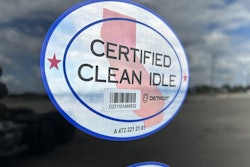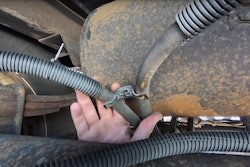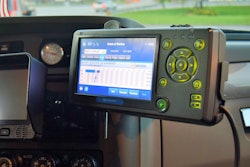The California Air Resources Board announced on Thursday a “Clean Truck Partnership” with the nation’s leading truck manufacturers and the Truck and Engine Manufacturers Association that advances the development of zero-emission vehicles (ZEVs) for the trucking industry. The full agreement can be seen here.
The partnership includes flexibility for manufacturers to meet emissions requirements while still reaching the state’s climate and emission reduction goals, a CARB press release said.
The Clean Truck Partnership includes Cummins, Inc., Daimler Trucks North America, Ford Motor Company, General Motors Company, Hino Motors Limited, Inc., Isuzu Technical Center of America, Inc., Navistar, Inc., Paccar Inc., Stellantis N.V., Truck and Engine Manufacturers Association, and Volvo Group North America.
CARB said the partnership “marks a commitment from the companies to meet California’s vehicle standards that will require the sale and adoption of zero-emissions technology in the state, regardless of whether any other entity challenges California’s authority to set more stringent emissions standards under the federal Clean Air Act.”
[Related: Trucking groups slam 'challenging' new EPA rule that slashes truck emissions limits]
In turn, CARB has agreed to work collaboratively with manufacturers to provide reasonable lead time to meet CARB’s requirements and before imposing new regulations and to support the development of necessary ZEV infrastructure.
“This agreement reaffirms EMA’s and its members’ longstanding commitment to reducing emissions and to a zero-emissions commercial vehicle future, and it demonstrates how EMA and CARB can work together to achieve shared clean air goals,” said EMA President Jed Mandel. “Through this agreement, we have aligned on a single nationwide nitrogen oxide emissions standard, secured needed lead time and stability for manufacturers, and agreed on regulatory changes that will ensure continued availability of commercial vehicles. We look forward to continuing to work constructively with CARB on future regulatory and infrastructure efforts designed to support a successful transition to ZEVs.”
[Related: Biden vetoes effort to kill latest EPA regs]
American Trucking Associations President and CEO Chris Spear was less enthusiastic over the agreement, noting his group would not surrender its right to litigate what it sees as strong-armed overreach.
"Our association represents motor carrier members – the paying customers who will inherit the costs of this agreement – and we will not roll over nor relinquish our right to litigate with any party when our interests are threatened," Spear said via emailed statement. "It is clear that America has lost its way when the government bullies the private sector to succumb to unachievable timelines, targets and technologies.”
Truckload Carriers Association President Jim Ward said the unfortunate casualties with this agreement are that the motor carrier and its drivers "will experience the pain points of this ill-suited compromise. As we have continued to point out, the issues of reliability, affordability and achievability of these regulations must remain at the forefront of these conversations.
"The trucking industry continues to be in the crosshairs of communicating all of these to a customer base that won’t entirely understand the ramifications of such rhetoric filled rules," he added. "Concerns of equipment reliability, infrastructure uncertainty and high cost of these trucks will reveal themselves as we move closer to these deadlines and our government officials will once again be forced to explain the shortcomings of the nation’s supply chain when now is the actual time to resolve these matters to develop environmentally friendly trucks that would continue to deliver this nation."
The terms of the Clean Truck Partnership include:
- CARB will align with EPA’s 2027 regulations for nitrogen oxide emissions. CARB also will modify elements of the 2024 NOx emission regulations for which manufacturers will provide offsets as necessary to maintain California’s emission targets.
- CARB commits to providing no less than four years of lead time and at least three years of regulatory stability before imposing new requirements.
- Truck manufacturers commit to meeting CARB’s zero-emission and criteria pollutant regulations in the state, regardless of any attempts by other entities to challenge California’s authority. As such, the OEMs and EMA have agreed that they will not legally challenge or support others’ legal challenges to any state’s adoption of CARB's regulations.
- OEMs also committed to putting "forth their best efforts to sell as many zero-emission trucks as reasonably possible in every state that has or will adopt CARB’s ACT regulations, even potentially exceeding any future U.S. EPA Phase 3 Greenhouse Gas requirements, irrespective of the outcome of any litigation that has been filed or may be filed challenging the waivers or authorizations for those regulations or CARB’s or any state’s overall authority to implement those regulations."
[Related: California becomes first government in the world to mandate electric trucks]
Cummins said it appreciates CARB adding flexibility as manufacturers work to transition to zero emissions and for aligning with EPA’s 2027 NOx standards.
“We also welcome CARB’s commitment to collaborate in the further development of ZEV infrastructure needed for our customers to adopt these technologies,” said Shelley A. Knust, Vice President of Product Compliance and Regulatory Affairs for Cummins Inc. “These actions will enable Cummins to improve product availability for our customers, while delivering significant emissions reductions.”
Sean Waters, vice president of Product Compliance and Regulatory Affairs for Daimler Trucks North America, said the company is continuing to work toward its goal of offering only carbon-neutral vehicles by 2039. For the overall industry transformation to become a reality, we believe the key to success is a close collaboration with all our stakeholders.”
Navistar Director of Product Certification and Compliance Michael Noonan said the agreement “enables the regulatory certainty we all need to prepare for a future which will include ever increasing volumes of low and zero-emissions technologies.”
[Related: California bans diesel truck sales as of 2036]
Additionally, Paccar said it’s committed to California’s environmental goals, as well as those of the nation as a whole. “This agreement provides regulatory certainty and supports a balanced transition to zero emissions by ensuring continued supply of product into California and opt-in states,” said John Rich, Chief Technology Officer for Paccar.
Finally, Volvo said it believes the partnership “lays the foundation for our customers to have the greatest possible product availability consistent with California’s climate change and air quality goals,” said Dawn Fenton, Vice President, Government Relations & Public Affairs for Volvo Group North America. “Through cooperative efforts such as this, the Volvo Group believes we can achieve the quickest and least disruptive transition to a commercial zero-emission vehicle future.”
The Clean Truck Partnership comes as California prepares for implementation of its landmark rules that put in place a phased-in transition toward 100% sale and use of zero-emissions technology for medium- and-heavy duty vehicles under CARB’s Advanced Clean Trucks and Advanced Clean Fleets rules by 2045.
In March, the Biden administration approved California’s waiver under the federal Clean Air Act that allows the state to become the first in the world to require zero-emissions technology for trucks.
By working together, California air quality regulators and truck manufacturers will ensure that the technology, infrastructure and supply will be available to meet the state’s ambitious clean air goals.
[Related: OEMs hoping California's zero emission funding model expands to other states]













